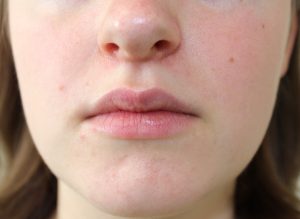Food allergies are common conditions where certain foods cause an allergic response in some individuals. This response is an immune response in which your system attacks allergens that may not inherently harmful. Symptoms can be varied in severity.
Allergy Symptoms
- Stomach pain, bloating, and/or cramping
- Diarrhea
- Runny Nose
- Sneezing/Coughing
- Itching
- Skin rashes
- Swelling
- Anaphylaxis
- This is an extreme allergic reaction the requires immediate medical attention. Anaphylaxis can lead to suffocation and constricted airways. It can also cause an extremely low blood pressure known as “anaphylactic shock”. If anaphylaxis isn’t treated, it can be fatal.
It can be difficult to determine which foods your child may be allergic to. Commonly, symptoms are mistaken for other problems or maladies. Food allergy response time is delayed for hours or even days, in some cases. This makes it challenging to determine exactly which meal caused allergy symptoms.
In order to determine what your child is allergic to, try a food elimination diet. Remove common food allergens and slowly add them back in to determine which foods are causing allergic reactions. You may also reach out to your pediatric healthcare provider or an allergist in order to diagnose a food allergy. Some healthcare practitioners use a skin test, a blood test, or a RAST test in order to determine if your child has a food allergy.
 Common Food Allergies
Common Food Allergies
- Cow’s milk & other dairy products
- Egg whites
- Poultry
- Seafood
- Wheat
- Nuts
- Soy & soybeans
- Chocolate
- Bee honey
Peanut Allergies
 Peanuts are now taboo in lunchrooms nationwide. Peanut butter is basically banned from a lot of
Peanuts are now taboo in lunchrooms nationwide. Peanut butter is basically banned from a lot of
schools due to an increase in food allergy prevalence.
Recommendations for combating food allergies have included everything from avoiding products that contain any allergen. For example, the AAP recommended in 2000 that anyone with a family history of peanut allergies avoid peanuts before the age of three. However, research shows that children who eat peanut butter at a young age have a lower chance of developing peanut allergies. Remember that peanuts may be a choking hazard for your children. Use smooth peanut butter to reduce choking potential.
Is it possible to prevent food allergies in your child?
In short, yes! You can use products that will introduce a small number of allergens to your child between the ages of 4 and 11 months of age. These products contain small, safe amounts of allergens in order to slowly help your child’s immune system to adjust to them. This can help you to diversify your kids’ diets later on in life.
Products Used to Minimize Food Allergies
- Spoonful One is a great product that helps protect your baby from developing food allergies.
- Ready. Set. Food! is another system that is used to introduce allergens into your child’s diet.
For questions or comments, please respond to this blog or contact us!




